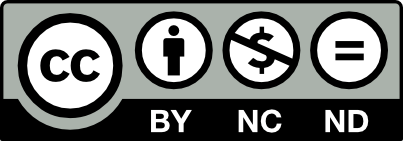This page is licensed under Creative Commons under Attribution 4.0 International. Anyone can share content from this page, with attribution and link to College MatchPoint requested.
5 Ways to Find Colleges With Better ROI Than Highly Selective Schools
Many families assume that the most selective colleges offer the best return on investment. The Ivy League and top public flagships carry powerful names, and it is natural to believe they guarantee success. Yet the reality is that students can often find equal or even stronger outcomes at schools that admit more students, offer generous scholarships, and provide greater access to faculty.
Return on investment in college is not about turning education into a transaction. It is about matching cost with opportunity so that your student can graduate with freedom, confidence, and choices. Here are five supportive ways to look for colleges that may offer better long-term value than the most highly selective schools.

1. Compare Net Price, Not Sticker Price
The price listed on a website rarely matches what families actually pay. On average, private colleges reduce tuition by more than half through scholarships and aid. Out-of-state costs at public flagships can also be much higher than families expect.
Questions to ask:
- What is the average aid package or scholarship for a student like mine?
- How much do families actually pay after aid and scholarships?
- Is the aid guaranteed for all four years, and what GPA is required to keep it?
2. Look at Alumni Outcomes
Rankings do not always reflect what matters most for families. A school’s value becomes clearer when you ask where graduates go after college. Many universities outside the top tier of selectivity show outcomes that match or even exceed those of ultra-competitive schools.
Questions to ask:
- What percentage of students are employed or in graduate school within six months of graduation?
- Which employers recruit directly on campus?
- Where do alumni in my student’s intended major typically work?
3. Identify Merit Aid Opportunities
One of the biggest differences between highly selective schools and many other colleges is the availability of merit aid. The most selective schools often do not award merit scholarships at all. By contrast, many strong private and regional universities use merit aid to attract students. These awards can lower the cost by $20,000 to $40,000 per year.
Questions to ask:
- What percentage of students receive merit scholarships?
- What academic or leadership qualities does the school typically reward?
- How much does merit aid usually reduce the total cost for families like ours?
4. Explore Honors Programs
Honors programs often provide the kind of small classes, personal attention, and research opportunities that families expect from highly selective schools. They also create communities within larger campuses, giving students priority registration, special housing, and access to faculty mentors.
Questions to ask:
- What benefits come with the honors program?
- How are honors courses different from regular classes?
- Do honors students have stronger outcomes in graduate school or job placement?
5. Think About Long-Term Flexibility
The true value of a college is not just in the first job offer. It is in the options that remain open after graduation. A student who graduates with manageable or no debt has the freedom to attend graduate school, relocate for work, or take a fellowship without financial strain. Families who choose schools with lower net costs often create more flexibility for the future.
Questions to ask:
- How much debt would our student likely carry if they attended this school?
- Will we still have flexibility to support graduate school or relocation?
- Does this choice expand my student’s opportunities, or limit them?
Case Studies: Students Who Chose Value and Thrived
Emma was admitted to a highly selective flagship as an out-of-state student, but the price tag was overwhelming. She accepted a large scholarship at a private university instead. Over four years, her family saved more than $100,000, and Emma secured internships at the same firms her flagship peers were pursuing.
Daniel weighed an Ivy acceptance with no aid against a respected private university that offered him a half-tuition scholarship. By choosing the merit option, he joined an honors program, gained early access to faculty mentorship, and graduated debt-free. Today he works at the same Fortune 500 company as his Ivy friends.
Maya had an Ivy acceptance but chose a regional flagship with a full merit scholarship. The decision allowed her to graduate nearly debt-free, enter medical school, and pursue extra research opportunities she might have delayed if she had carried large undergraduate loans.
These stories remind us that prestige is not the only path to opportunity. Students can thrive, and often do, at schools that align cost with access and support.
Highly selective schools can be wonderful, but they are not the only places where students succeed. Families who expand their search find colleges that combine affordability, strong outcomes, and personal support.
The real measure of ROI is not about prestige. It is about giving your student the freedom to step into life after graduation with choices, confidence, and momentum.


